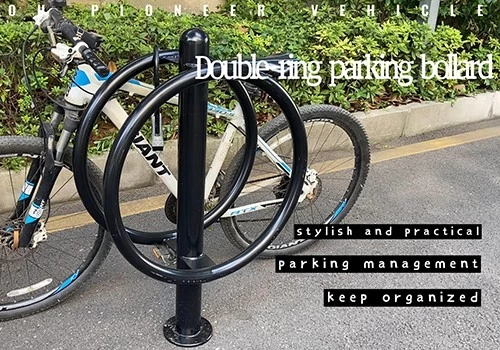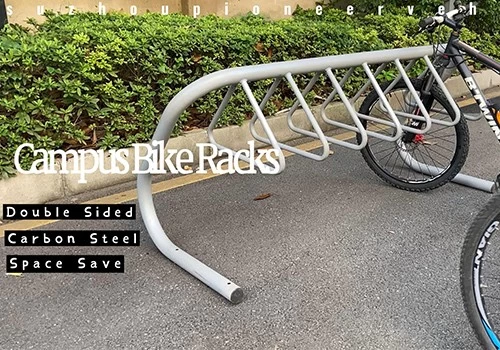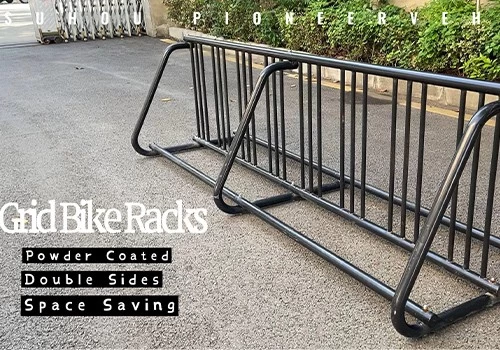Specifications
Model Number : PV-SC-001
Type: Bike parking and storage
Color:Yellow,Black,Green,Red,or Customized.
Style : both indoors and outside
Material : carbon steel
Loading: According to customer need
Size :195*23.2*75cm,200.55*23.2*75cm,or Customized.
Finish: hot-galvanized
Specifications
Model Number : PV-0081-01
Type: Bike parking and storage
Color:silver
Style : both indoors and outside
Material : carbon steel
Loading: According to customer need
Size :Height 1463mm, Depth 1114mm
Finish: hot-galvanized
Model Number : PV-0081-01
Type: Bike parking and storage
Color:Black
Style : both indoors and outside
Material : carbon steel
Loading: 2-10 bikes (According to customer need)
Size :Height 1463mm, Depth 1114mm
Finish: hot-galvanized
Model No.: PV-H1
Size: w605*D400*H330mm
Specification: Round tube:¢16*1.2mm
Finish: Power coated
Net Weight: 1.6 kgs
Packing size:6pcs/ctn
MOQ: 100pcs
Model Number : PV-0024-01
Material : carbon steel/stainless steel
Loading: according customer space size,we can design according the size
Size : W1977*D1130(depend on your parking space)*H2500mm
Finish: Powder coated ,hot-galvanized/electric polish
Packing size :2000*2000*2500mm(40 parking space )
Powder coated ,hot-galvanized/electric polish
Product number:PV-0046-01
Material:carbon steel
Specification:10.2*59*28CM or Customized.
MOQ:100PCS
Port:Shanghai
Trademark:PV
Model Number : PV-0081-01
Type: Outdoor Bike Parking Rack
Style : both indoors and outside
Material : carbon steel
Loading: 2-10 bikes (According to customer need)
Size :170.5*116*148CM
Finish: hot-galvanized
Model Number : PV-0055-01
Type: compact flat pack /slot
Color:black / silver /yellow/optional
Style :Outdoor/indoor
Material : carbon steel/ stainless steel
Capacity : park 6 bikes
Size : L1400*W1054*H840mm
Net weight :38KG
Finish: powder coating / hot galvanized /elctropolishing
Packing size :1490*860*160mm 1pcs/ctn
Product Name: Multi-Capacity Horizontal Two Tier Bike Parking Rack
Material: Carbon Steel
Finish: Powder coated
Post: 80mm * 80mm thickness: 3mm
Steel plate: thickness: 2mm
Dimension: 1325*1890*1830mm
Weight: 370 kg/set
Model: PV-0067-01
Material: stainless steel 304
Pipe: 50 mm* 2.5 mm
Size: 900*700 mm(L*W)
Surface treatment: polishing

As cities and businesses aim to promote cycling as a sustainable and healthy form of transportation, the demand for well-designed and properly installed bike parking racks is increasing. However, simply providing bike racks is not enough—ensuring they are correctly installed is essential to maximizing their usefulness, durability, and security. Improper installation can lead to a host of issues, from damaged bikes to frustrated cyclists, and can also increase the risk of theft. For manufacturers of bike parking racks, understanding and promoting best practices for installation is a key factor in maintaining customer satisfaction and ensuring long-term product success.
This article outlines the best practices for installing bike parking racks, focusing on essential factors such as location selection, installation techniques, ADA compliance, and long-term maintenance considerations. With these guidelines, manufacturers can provide their clients with the tools and knowledge they need to ensure their bike parking infrastructure performs optimally.
One of the most crucial aspects of bike rack installation is selecting the right location. Bike racks should be placed in areas that are both convenient for cyclists and secure. Poorly located racks may deter cyclists from using them, or worse, leave bikes vulnerable to theft or damage.
1,High-Traffic Areas: Bike racks should be installed in visible, high-traffic areas. Cyclists prefer parking their bikes where they feel safe, and having racks in well-lit, busy locations helps deter theft. Avoid placing racks in secluded or dark areas, as these may attract thieves or vandals.
2,Proximity to Building Entrances: Cyclists want to park close to their destination. Installing racks near entrances to offices, stores, or public facilities provides the convenience that encourages bike use. As a rule of thumb, bike racks should be located within 50 feet of building entrances, ideally closer if possible.
3,Sheltered Areas: Providing shelter for parked bikes can significantly enhance the value of the rack. Exposure to rain, snow, or intense sunlight can damage bicycles over time, so whenever possible, installing racks under canopies or in covered areas protects bikes from the elements. This feature is especially important in regions with harsh weather conditions.
4,Avoiding Obstructions: Care should be taken to install racks in locations that are free of obstructions. Avoid placing racks too close to walls, curbs, or other objects that could prevent cyclists from locking their bikes securely. There should be ample space for cyclists to maneuver their bikes into the rack without difficulty.
The surface and foundation on which a bike rack is installed are key factors in ensuring the rack’s stability and longevity. Bike parking racks must be installed on a solid, durable surface to avoid shifting, tipping, or loosening over time.
1,Concrete Surfaces: The ideal surface for bike rack installation is concrete. Concrete provides a strong, stable foundation that ensures the rack will remain secure, even after years of use. When installing on concrete, racks should be anchored using tamper-proof bolts to prevent easy removal or tampering.
2,Asphalt or Pavers: In some cases, bike racks may need to be installed on asphalt or paving stones. While these materials are not as sturdy as concrete, proper installation techniques can ensure stability. If installing on asphalt, using specialized anchors designed for softer surfaces can help keep the rack secure. For paver installations, care must be taken to anchor the rack beneath the pavers, ensuring long-term durability.
3,Soil or Grass: Installing bike racks directly on soil or grass is not recommended, as these surfaces lack the stability required for a secure installation. If necessary, a concrete pad should be poured beneath the bike rack to provide a solid foundation.

Different styles of bike racks require slightly different installation techniques. As a manufacturer, it's important to provide clear instructions to clients on how to install each specific type of rack to ensure proper usage and security.
1,U-Shaped or Inverted U Racks: U-shaped racks are among the most popular bike rack designs due to their simplicity and effectiveness. These racks should be installed with a minimum of two anchor points into the concrete foundation. The spacing between individual U racks should be sufficient to allow bikes to be locked from both sides while maintaining enough room between the racks for easy access.
2,Grid Racks: Grid racks, often used in public spaces or schools, can accommodate multiple bikes at once. These racks should be installed parallel to the curb or wall, ensuring that cyclists can lock their bikes from either side. Because grid racks hold more bikes, they need to be anchored securely at multiple points along their length to avoid bending or tipping under the weight of numerous bikes.
3,Vertical and Wall-Mounted Racks: Vertical bike racks and wall-mounted racks are ideal for areas with limited space. These racks require a solid, reinforced wall for installation. Manufacturers should provide instructions for securing the rack at multiple anchor points to ensure the weight of the bikes does not cause damage to the wall or the rack itself. Additionally, the height of the racks should be carefully measured to ensure they are easily accessible to all users.
4,Custom and Modular Racks: Custom and modular racks may require specialized installation instructions depending on the design. Modular systems should be anchored securely at each connection point, and care should be taken to ensure the system is level and stable before use.
Bike rack installations must comply with local regulations, including the Americans with Disabilities Act (ADA) in the United States, which ensures accessibility for all individuals, including those with disabilities. Ensuring ADA compliance during bike rack installation not only avoids legal issues but also makes your product accessible to a broader range of users.
1,Pathway Clearance: Bike racks should be installed in a way that does not obstruct pathways, sidewalks, or entryways. Ensure there is enough space between the bike rack and other structures so that individuals, including those using wheelchairs or mobility devices, can pass by without difficulty. ADA guidelines recommend a minimum clearance of 36 inches around bike racks.
2,Height and Reach: Wall-mounted racks or vertical racks should be installed at heights that can be easily reached by most users, including individuals with limited mobility. Racks should not be mounted too high, and any locking mechanisms should be within reach for all users.
3,Dedicated Accessible Parking: In some cases, it may be necessary to install dedicated bike parking for users with disabilities. These spaces should be clearly marked and located near entrances, with enough room to accommodate adaptive bikes or other specialized equipment.
Even the best-installed bike racks require periodic maintenance to ensure they continue to function properly. Manufacturers should provide clients with guidance on how to maintain bike racks over the long term, ensuring durability and preventing damage.
1,Regular Inspections: Encourage clients to perform regular inspections of their bike racks. Check for signs of wear, rust, or damage that could compromise the rack’s security. Bolts should be tightened as needed, and any racks that show significant signs of wear should be repaired or replaced.
2,Weather-Resistant Coatings: For outdoor bike racks, weather-resistant coatings such as powder coating or galvanized finishes can protect the racks from rust and corrosion. Manufacturers should emphasize the importance of these coatings, particularly in areas with harsh weather conditions.
3,Cleaning and Upkeep: Bike racks, especially those in public or high-traffic areas, can accumulate dirt, grime, and debris over time. Regular cleaning not only keeps the racks looking good but also prevents damage from corrosive substances like salt or chemicals.
Providing exceptional customer support for bike rack installation can set a manufacturer apart from the competition. Offering installation services or detailed, easy-to-follow guides can make a significant difference in ensuring that clients install their racks correctly. Clear communication of best practices helps prevent common installation mistakes, reducing the likelihood of customer dissatisfaction or future service requests.
1,Installation Guides: Each bike rack model should come with a detailed installation guide that outlines the proper tools, materials, and techniques needed for installation. Providing visual aids, such as diagrams or instructional videos, can help ensure clients understand the process and avoid mistakes.
2,Installation Services: For larger projects or complex installations, offering professional installation services can be a valuable option for clients. This ensures that the racks are installed correctly the first time, minimizing the risk of future issues.
3,Customer Support: A dedicated customer support team that can answer questions and offer installation advice is crucial for maintaining strong relationships with clients. By providing ongoing support, manufacturers can ensure that their products are being used effectively and address any installation-related issues that arise.
Proper installation of bike parking racks is just as important as their design and production. By following best practices for location selection, installation techniques, ADA compliance, and long-term maintenance, manufacturers can help their clients create safe, secure, and convenient bike parking solutions. These guidelines not only enhance the longevity of the bike racks themselves but also improve the overall user experience for cyclists, encouraging more people to choose bikes as their preferred mode of transportation.
For manufacturers, offering comprehensive installation support and education further strengthens customer relationships and builds a reputation for quality and reliability. In an increasingly bike-friendly world, ensuring the success of every bike rack installation is a key step toward promoting cycling as a sustainable and practical transportation option.
